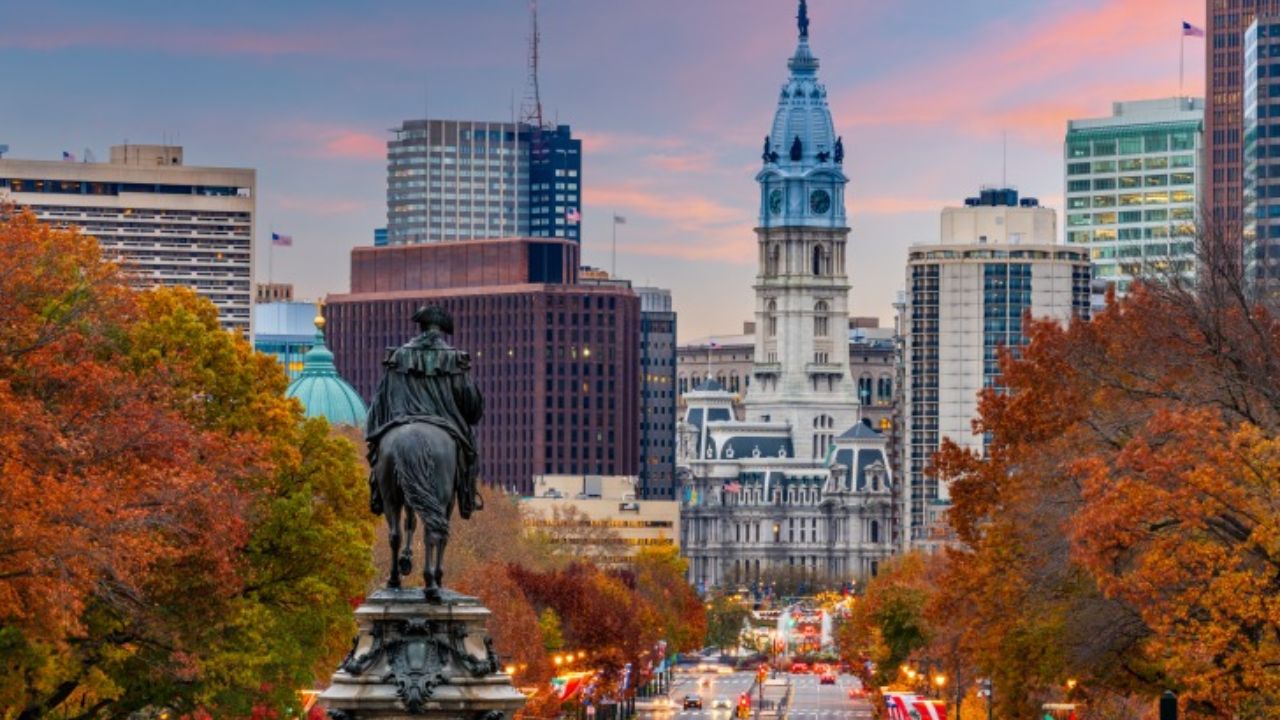A recent report by 24/7 Wall Street has revealed that four cities in Pennsylvania rank among the most dangerous places in the United States. According to new data, Pennsylvania has emerged with a troubling statistic as four of its cities have been ranked among the most dangerous in the US.
This revelation underscores the need for a deeper understanding of the factors contributing to crime rates in urban areas.
1. McKees Rocks, Pennsylvania:
McKees Rocks, often called “The Rocks,” is a borough in Allegheny County, Pennsylvania, known for its high crime rate. With a population of 5,920, McKees Rocks has a crime rate of 6,409 per 100,000 residents, making it 173% more dangerous than the national average.
In 2022, there were 106 incidents of violent crime and 262 incidents of property crime, which are significantly high considering the small population of the city.
2. Chester, Pennsylvania:
Chester, located near Philadelphia in Delaware County, Pennsylvania, is known for its high crime rate and political corruption. With a population of 32,605 people, it’s consistently ranked among the most dangerous cities in the state.
The crime rate here is 116% higher than the Pennsylvania state average, with 4,389 crimes per 100,000 people. Additionally, as of 2021, the median home price in Chester is only $66,800.
3. Philadelphia, Pennsylvania:
Philadelphia might seem like it would rank higher on this list because of its size. However, when considering its population, the crime rate isn’t as high. But that doesn’t mean the city is completely safe.
With a population of 1,603,797, Philadelphia has a crime rate of 4,006 per 100,000 people, which is 97% higher than the state average. Residents have a 1 in 25 chance of experiencing any type of crime. Like many big cities, crime is concentrated in specific areas, with North and West Philadelphia being the most violent.
4. Reading, Pennsylvania:
Reading, situated in Berks County, has a population of 95,112. Its residents face a 1 in 28 chance of experiencing any type of crime, with a total crime rate 81% higher than the state average. In 2022, the city reported 690 violent crimes and 2,742 property crimes.
Despite its proximity to the mountains and Philadelphia in the Delaware Valley, Reading grapples with economic challenges and poverty. The median home value in the city is only $69,400.
What Measures Are Being Taken to Address the Crime Rates in These Cities
To address the crime rates in cities like Philadelphia, various measures are being implemented based on the information from the provided sources:
1. Environmental Approaches and Resource Deployment: Cities are adopting environmental crime approaches like cleaning-and-greening, changing traffic patterns, and upgrading infrastructure to influence crime trajectories. Targeted investments are being made to improve education, employment, healthcare, housing, and other socioeconomic factors that contribute to crime and violence.
2. Violence Reduction Units: Cities with high rates of violent crime are establishing dedicated units for violence reduction, operating with senior leadership reporting directly to the mayor. These units provide direct services, administer funding, and act as hubs for anti-violence efforts. Law enforcement agencies are focusing on preventing violence and working closely with citizens and community partners.
3. Trauma-Informed Approaches: Agencies working with victims and survivors of violent crime are adopting trauma-informed approaches to address the impacts of trauma. This includes recognizing the symptoms of trauma and ensuring that appropriate supports and services are provided. Law enforcement officers are also benefiting from trauma-informed approaches.
4. Blueprint for Safer Communities: Philadelphia has developed a Blueprint for a Safer Philadelphia, which offers 140 recommendations to reduce gun violence in the city. The plan focuses on cutting down on straw purchases of firearms, targeting services to specific areas, and considering community input for effective solutions. The goal is to develop an action plan based on the ideas generated from the blueprint.
5. Philadelphia Roadmap to Safer Communities: The Philadelphia Roadmap to Safer Communities takes a public health approach to violence prevention, using data to understand and address the underlying factors contributing to violence. The plan emphasizes strategies to reduce gun violence over the next five years, addressing challenges such as poverty and systemic racism.
6. Community Engagement and Funding: Community leaders, policymakers, and law enforcement are collaborating to implement concrete programs and solutions to combat violence. Efforts include increasing police presence, installing surveillance cameras, investing in anti-violence workforce development, and exploring new technologies like facial recognition cameras to enhance crime-fighting capabilities.
These measures collectively aim to address the root causes of crime, enhance community safety, and reduce violence in these cities. By combining environmental, social, and law enforcement strategies, cities are working towards creating safer and more secure environments for their residents.
Conclusion:
While these statistics may be alarming, it’s important to note that the title of “most dangerous city” in the United States frequently changes from year to year. Furthermore, violence tends to be hyper-localized, often concentrated in specific neighborhoods or even on a block-by-block basis.
By examining both crime data and socioeconomic indicators, 24/7 Wall Street aimed to provide a thorough understanding of the safety profiles of various urban areas across the nation.

